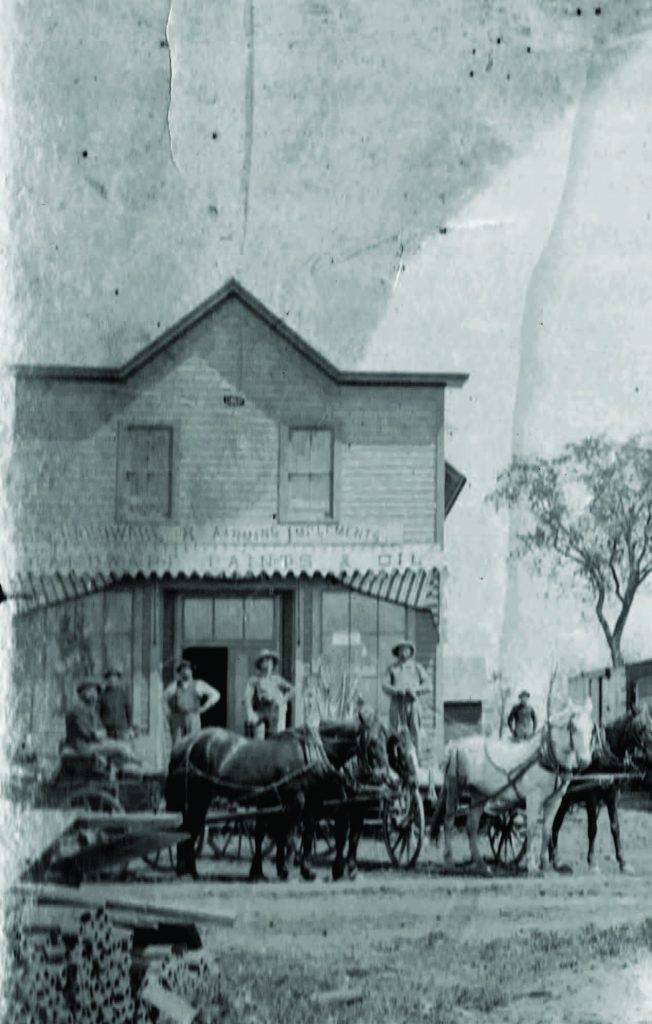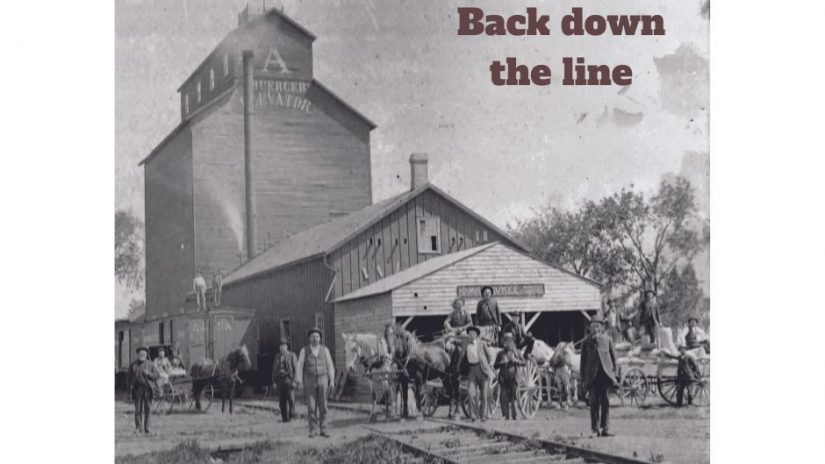I am looking forward to this visit. This picture is really interesting and has a lot of small detail in it. If I remember correctly, when I bought the picture, it said it was a town in Wisconsin, although it didn’t list the exact town. This first thing I did was take a close look at the writing on the buildings to see if the name of the town was on one of them. I could not make out any town name. On the tall building, which I would call an elevator, there is a giant “A” and then underneath of that are what appears to be an R or B, U-E, then another R or B, then a clear C-E and the last letter is an R or B. Underneath that, it says “Elevator.” On that same building, if you go down to what looks like two garage openings behind the fellas in wagons, you can clearly make out “Milwaukee.” So I got to thinking, surely this is not early Milwaukee, Wisconsin. Upon further inspection of that sign, it says “Milwaukee Binders and Mowers.” So I didn’t think Milwaukee had anything to do with the location.





